Week 8#
Lecturer: Barsha Mitra, BITS Pilani, Hyderabad Campus
Date: 16/Oct/2021
Topics Covered#
- Chandy Misra Haas Algorithm for the OR model
- Steps
- Examples
- Performance Analysis
- Deadlock Resolution
Chandy Misra Haas Algorithm for the OR model#
- 2 types of messages are used:
- \(query(i, j, k)\)
- \(reply(i, j, k)\)
- Denote that they belong to a deadlock detection initiated by \(P_i\) and are being sent from \(P_j\) to \(P_k\)
- A blocked process initiates deadlock detection by sending query messages to all processes in its dependent set \(DEPEN\)
- Local variable \(num_k(i)\) = number of query messages sent
- \(P_k\) maintains a boolean variable \(wait_k(i)\)
- \(wait_k(i)\) denotes that \(P_k\) has been continuously blocked since it received the last engaging query \(P_i\)
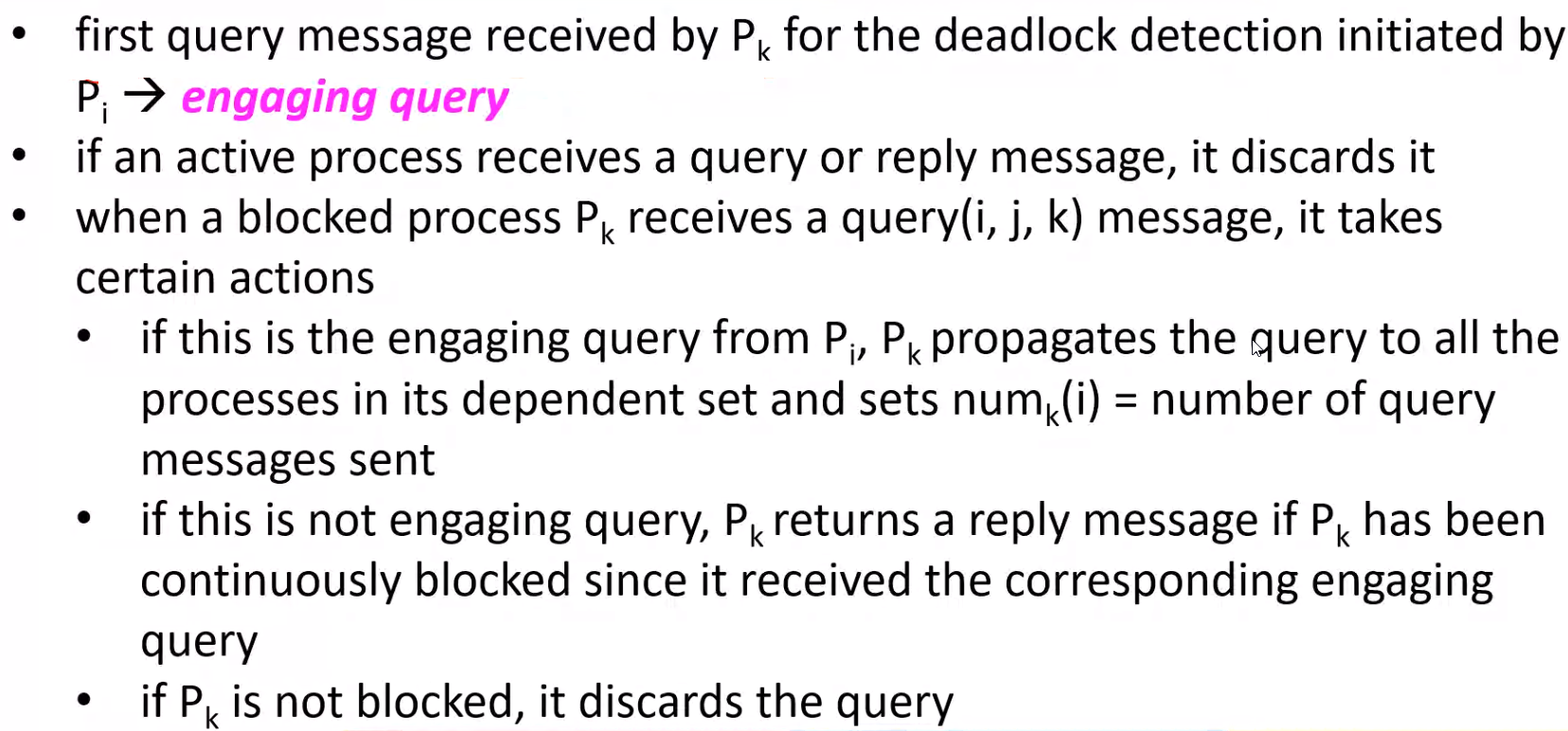
Steps#
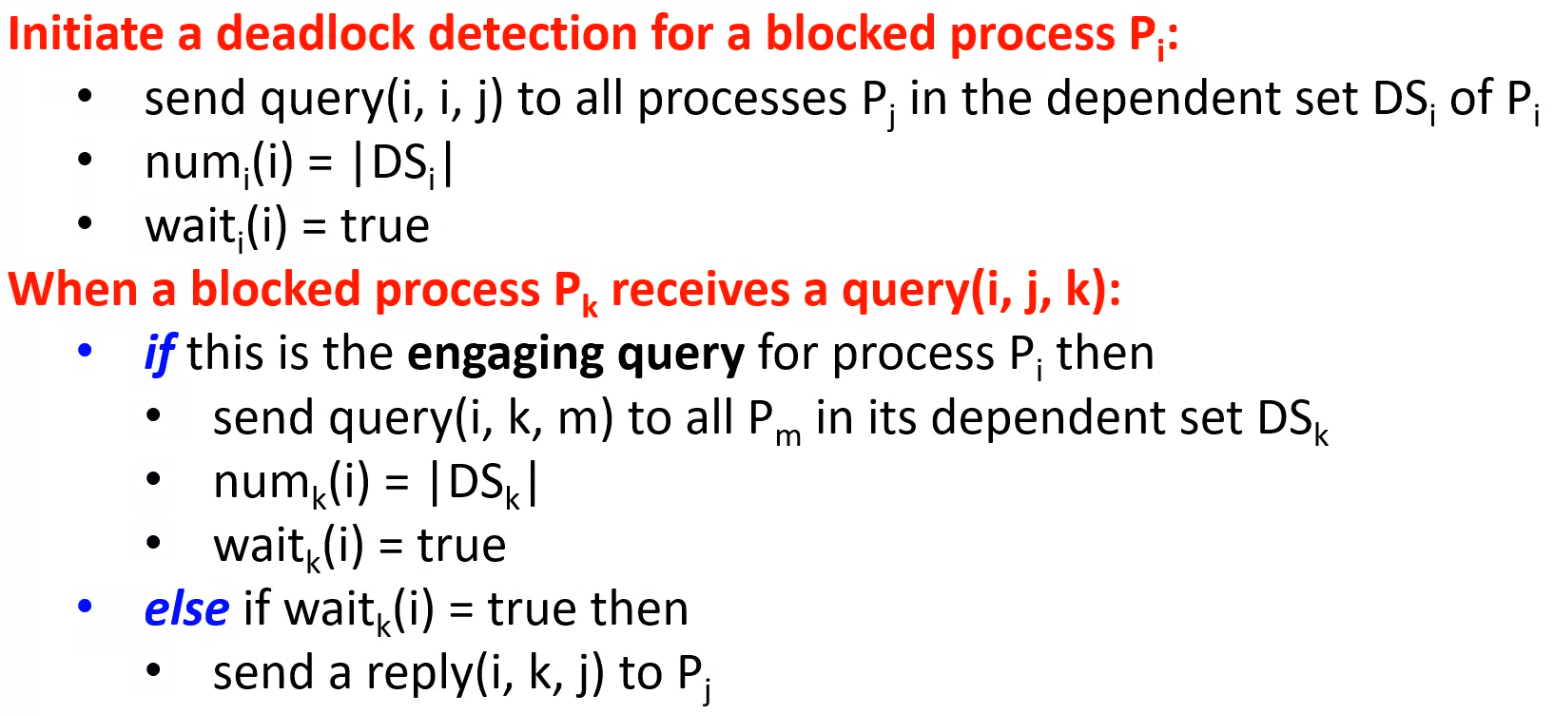
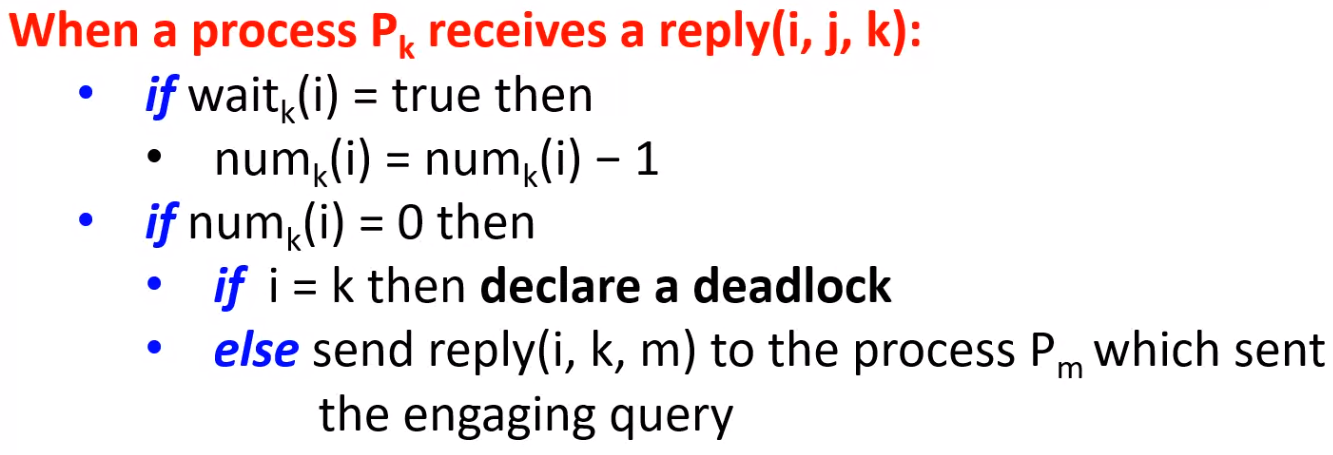
Examples#
\(B\) sends first message
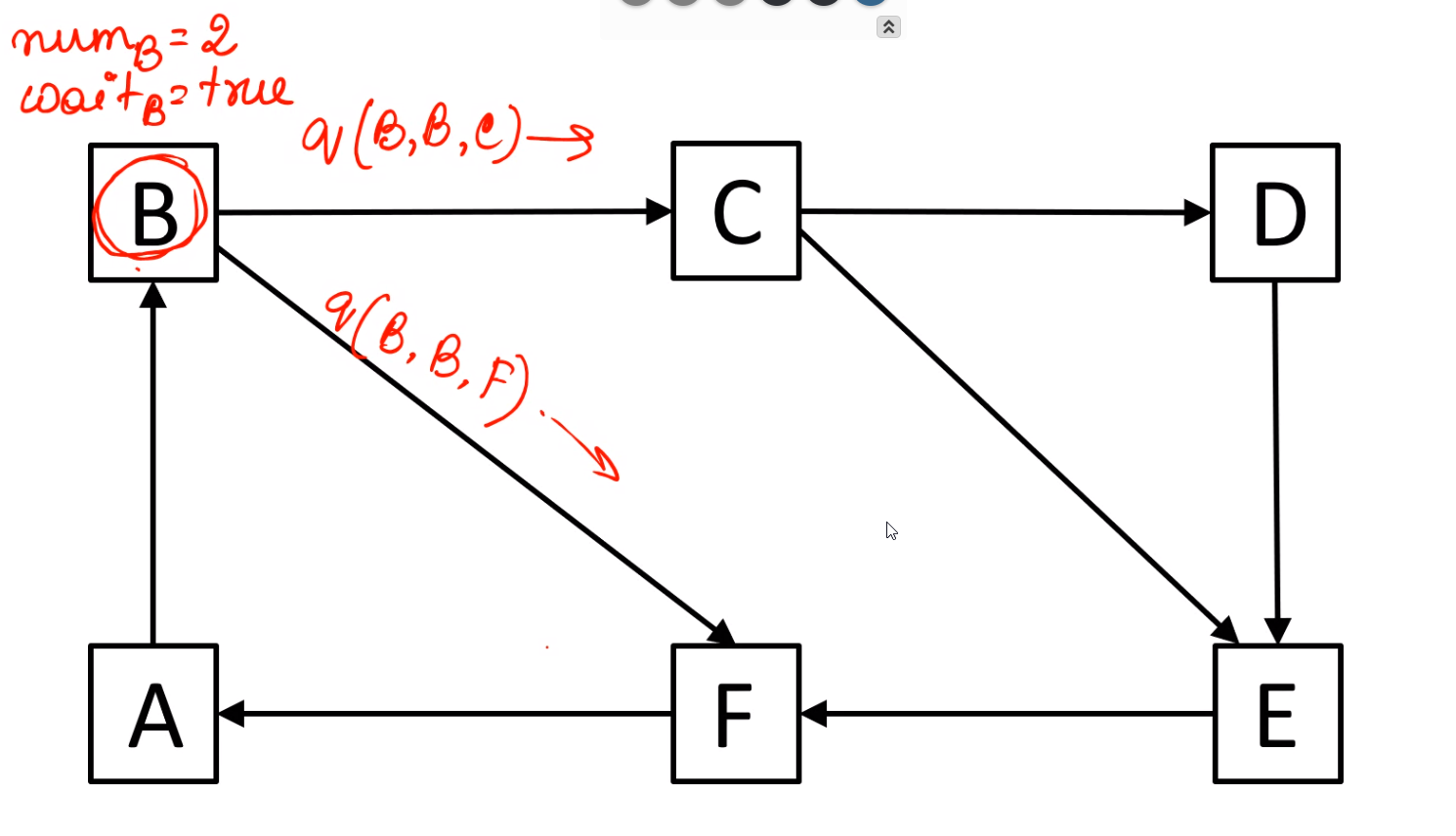
\(C\) sends query message after getting query from \(B\)

\(F\) sends query message after getting query from \(B\)
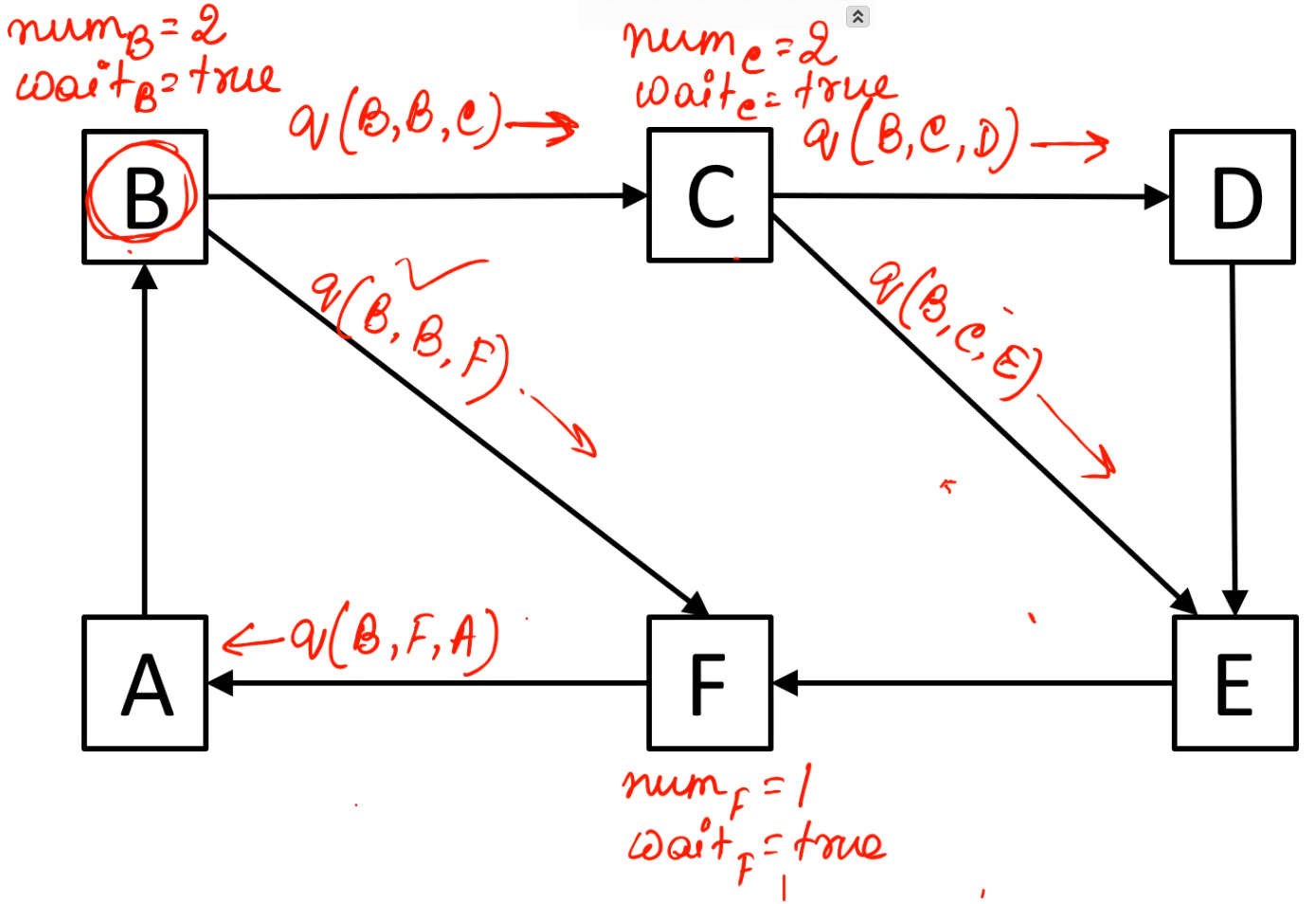
\(E\) sends query message after getting query from \(C\)
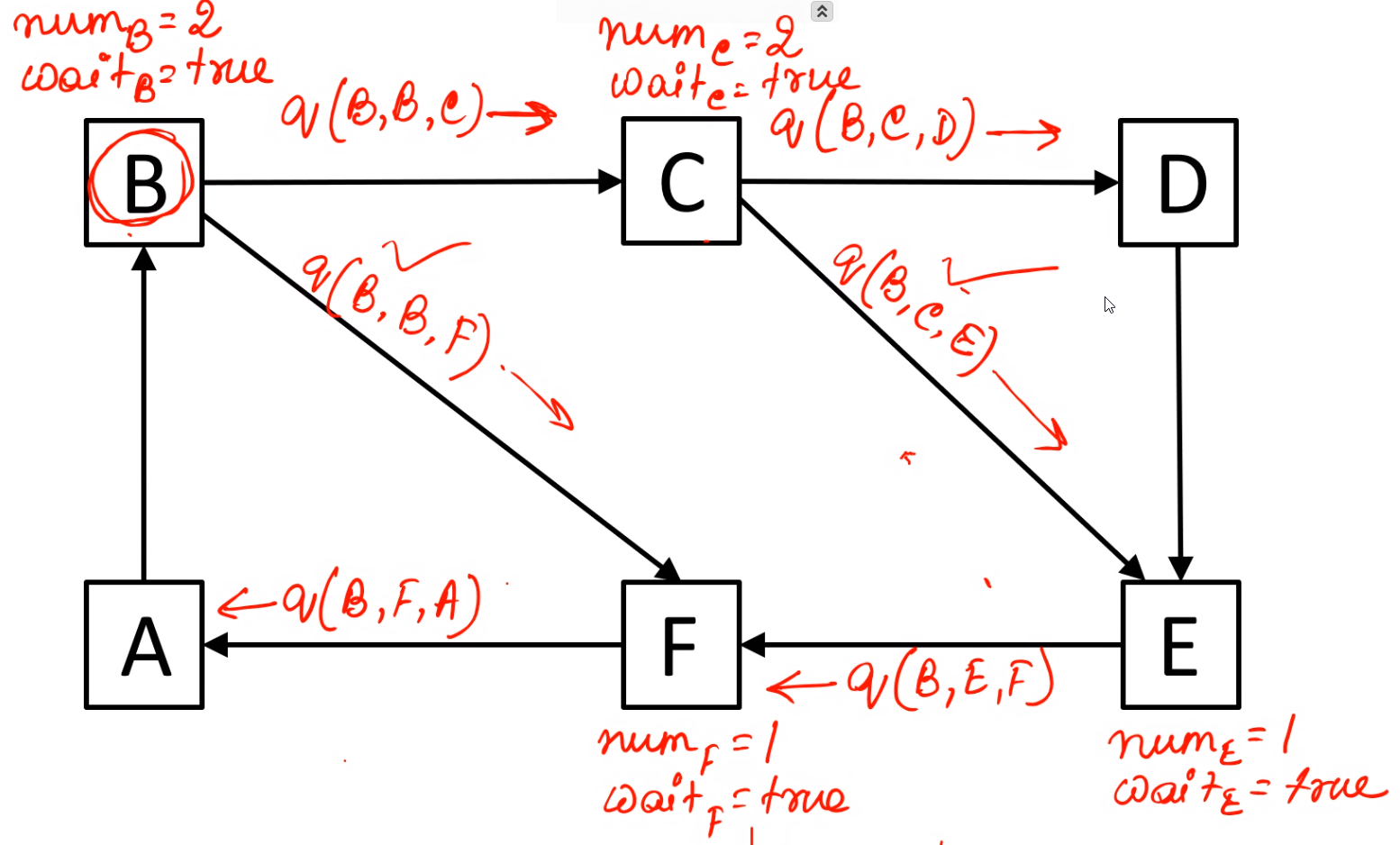
The message sent by \(E\) is non engaging for \(F\) so \(F\) sends a \(reply\) to \(E\)
\(D\) sends a query to \(E\) after getting query from \(C\)
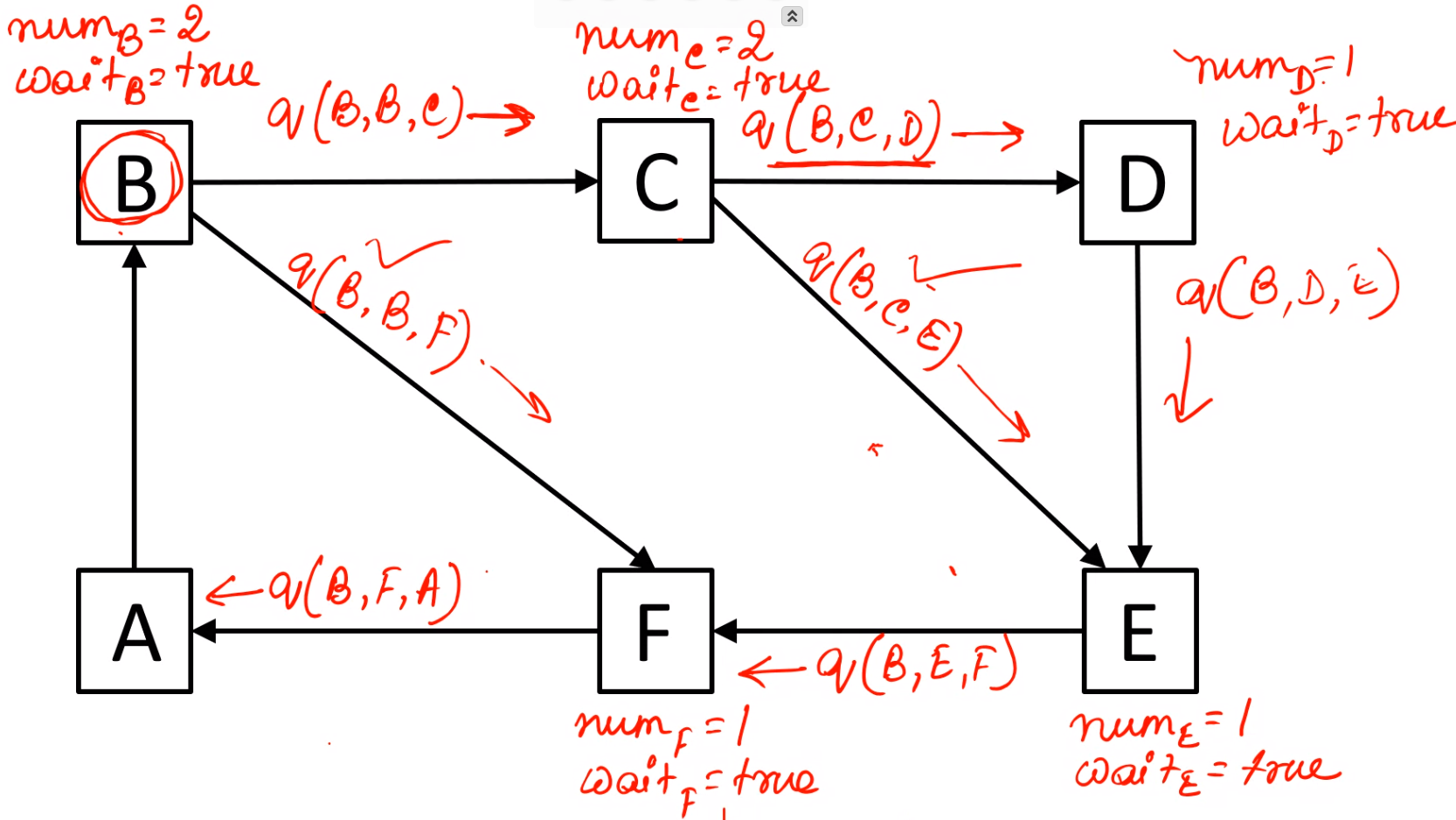
The message sent by \(D\) is non engaging for \(E\) so \(E\) sends a \(reply\) to \(D\)
\(A\) sends a query to \(B\) after getting query from \(F\)

Since the query message from \(A\) is received by \(B\) who initiated the algorithm, hence \(B\) sends out a reply
The reply path looks like this:
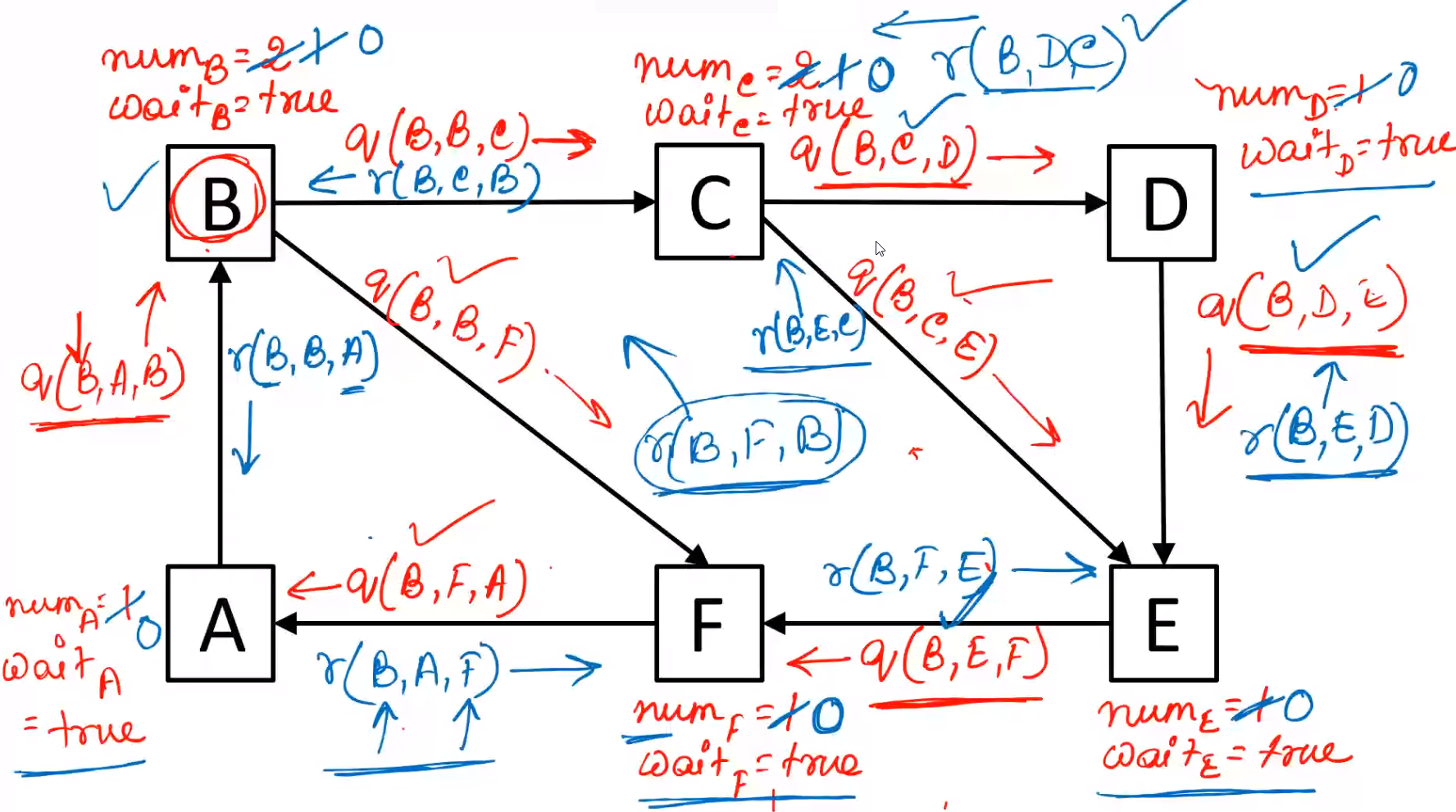
Since \(B\) received all replies and \(num_B = 0\) the node B declares deadlock
Performance Analysis#
- For every deadlock detection, the algorithm exchanges \(e\) query messages and \(e\) reply messages, where \(e = n(n - 1)\)
- \(e\) is the number of edges, \(n\) is the number of processes
Deadlock Resolution#
- Deadlock reslutions involves breaking exisiting wait-for dependencies between processes
- Rolling back one or more deadlocked processes
- Assigning resources of rolled back processes to blocked processes
- Blocked processes resume execution
- When a wait-for dependency is broken
- Corresponding information should be immediately cleaned from the system
- Otherwise may result in detection of phantom deadlocks
Agreement Problem#
- Agreement among processes in a distributed system
- Processes need to exchange information to negotiate with one another and eventually reach a common understanding or agreement, before taking actions
Failure Models:
- Among the \(n\) processes in the system, at most \(f\) processes can be faulty
- Faulty process can behave in any manner allowed by the failure model assumed
- Various processor failure models - From recorded lecture
Synchronous/Asynchronous communication:
- If a failure prone processes chooses to send a message to process \(P_i\) but fails, then \(P_i\) cannot detect the non arrival of the messages in an asynchronous system
- Scenario is indistinguishable from the scenario in which the message takes a very long time to travel
- Impossible to reach a consensus in an asynchronous system.
- In a synchronous system, a message that has not been sent can be recognized by the intended recipient, at the end of the round
- The intended recipient can deal with the non arrival of the expected message by assuming the arrival of a message containing some default data, and then proceeding with the next round of the algorithm
Network Connectivity:
- System has full connectivity, i.e., each process can communicate with any other by direct message passing
Sender Identification:
- A process receiving a message always knows identity of sender process
- Also true for malicious senders
Channel Reliability:
- Channels are reliable
- Only the processes may fail (Under one of the various failure models)
Agreement Variable:
- May be boolean or multi valued
- Need not be an integer
Non authenticated messages:
- With such messages, when a faulty process relays a message to other processes
- It can forge the message and claim that it was received from another process
- It can also tamper with the contents of a received messages before relaying it
- Receiver cannot verify its authenticity
- Unauthenticated message is also called oral message or unsigned message
Byzantine Agreement Problem#

- Requires a designated process, called the source process, with an initial value, to reach agreement with the other processes about its initial value, subject to the following conditions:
- Agreement: All non faulty process must agree on the same value
- Validity: If the source process is non-faulty, then the agreed upon value by all the non-faulty processes must be the same as the initial value of the source
- Termination: Each non faulty process must eventually decide on a value.
- If the source process is faulty, then the correct processes can agree upon any default value
- Irrelevant what the faulty processes agree upon - or whether they terminate and agree upon anything at all
Consensus Problem#
- It is initiated by all processes
- Agreement: All non faulty processes must agree on the same (single) value
- Validity:
- If all the non-faulty processes have the same initial value, then the agreed upon value by all the non-faulty processes must be that same value
- If non-faulty processes broadcast different initial values, then these processes should decide upon a common value
- Termination: Each non-faulty process must eventually decide on a value
Interactive Consistency Problem#
- Initiated by all processes
- Agreement: All non faulty processes must agree on the same array of values
- Validity:
- If process \(P_i\) is non faulty and its initial value is \(V_i\) then all non faulty processes agree on \(V_i\) as the \(i^{th}\) element of the array \(A\)
- If \(P_j\) is faulty, then the non faulty processes can agree on any value for \(A[j]\)
- Termination: each non faulty process must agree on some value for \(A[]\)
Upper Bound on Byzantine Processes#
In a system of n processes, this problem can be solved in a synchronous system only fo the number of Byzantine processes f is such that
\(f \le floor((n - 1)/3)\)
